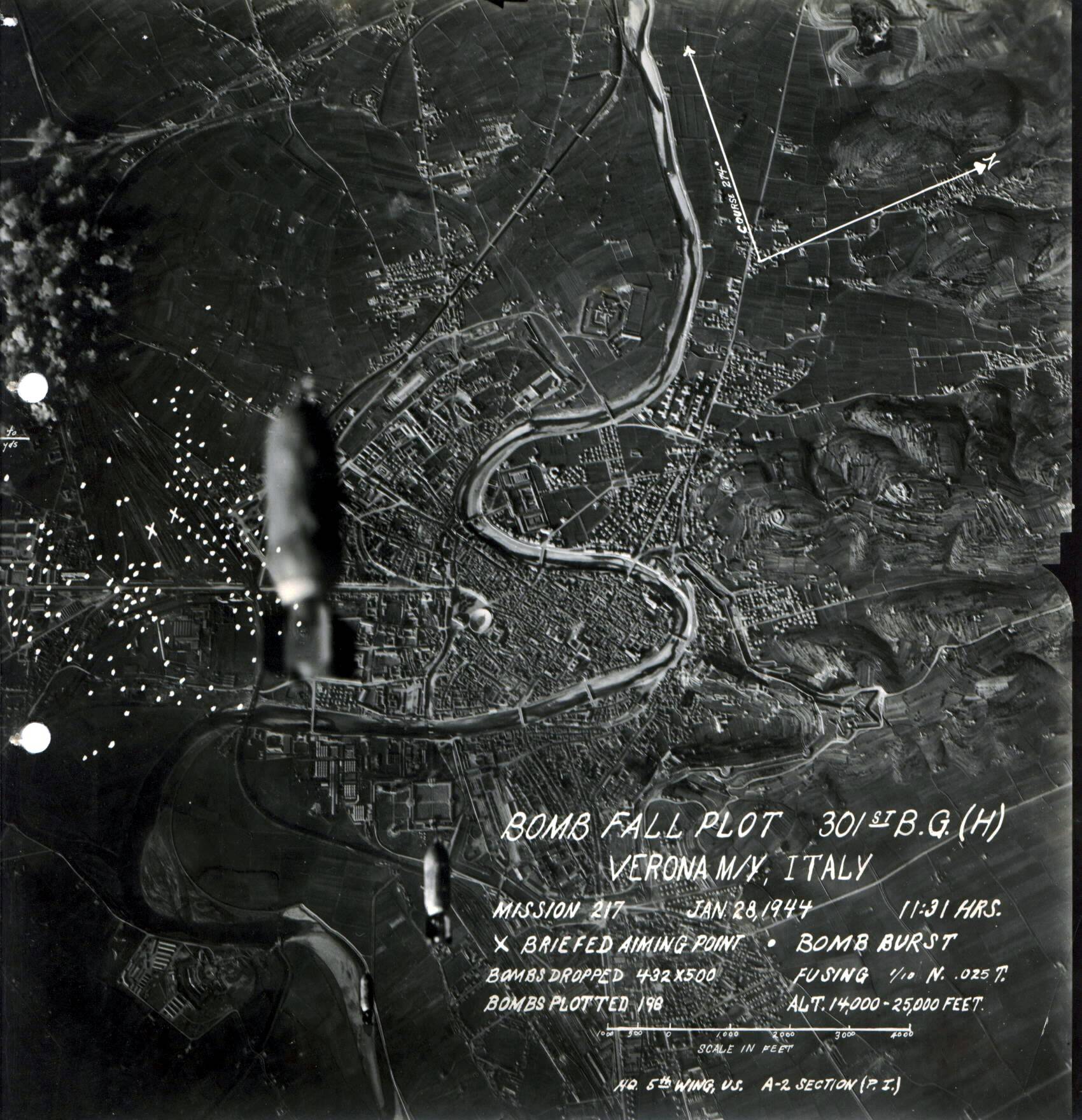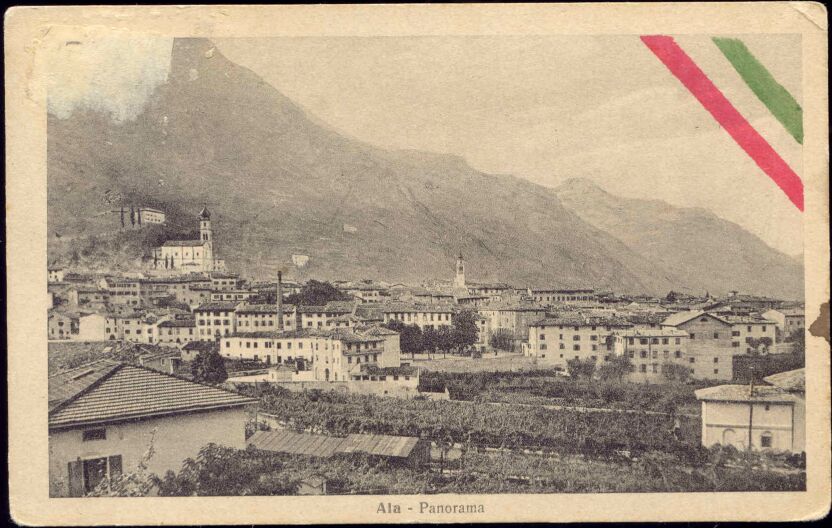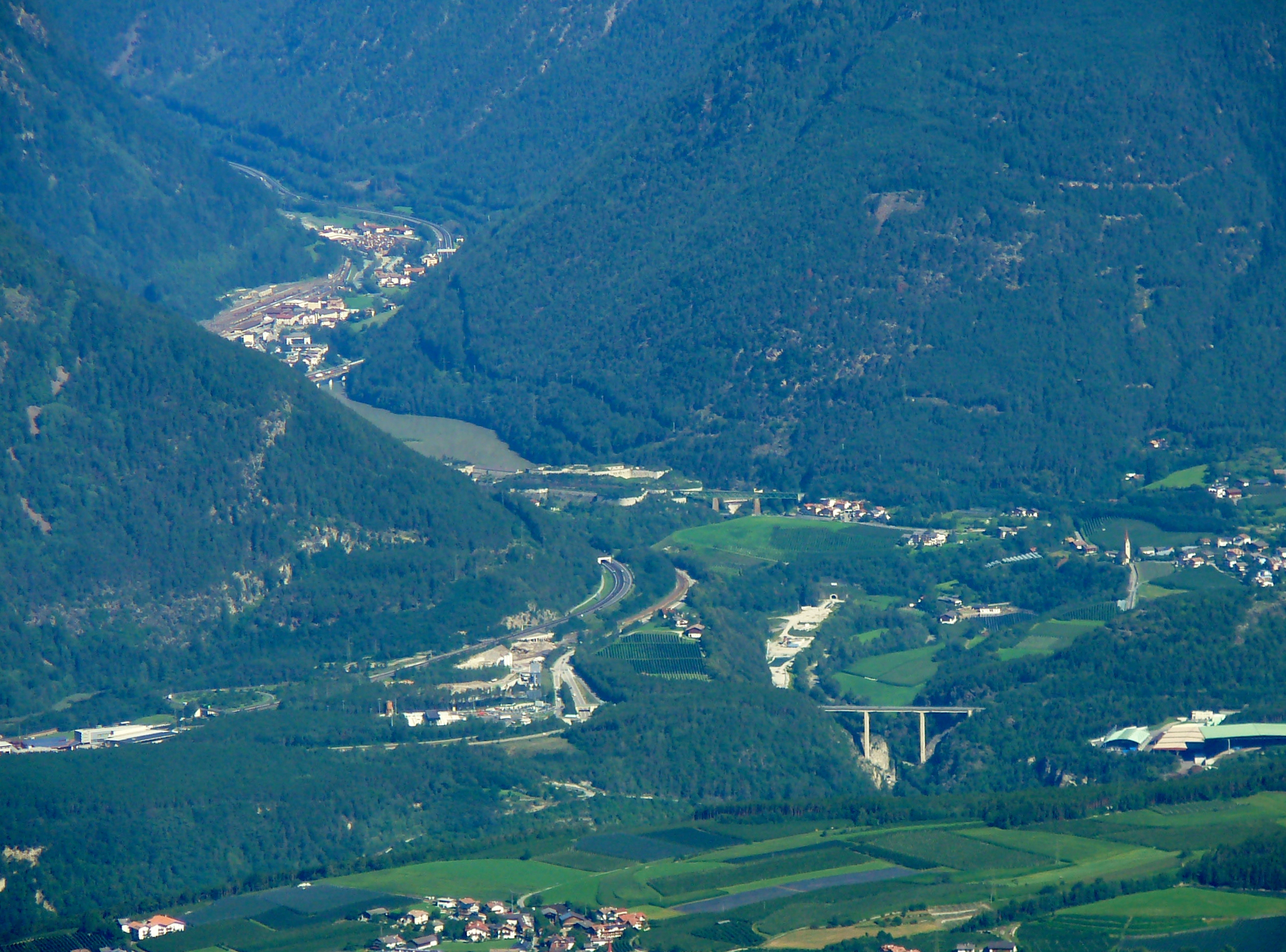|
Verona Porta Nuova Railway Station
Verona Porta Nuova is the main railway station of Verona, Italy. It is one of the two stations serving central Verona; the other station, Verona Porta Vescovo, is located at the east of the city. It is situated at ''Piazzale XXV Aprile'' ("25 April") at the south of the city centre. The station is a 20-minute walk (approximately 1,5 km) or 10-minute bus ride from Arena di Verona. The station was opened in 1852 by the Austrian Empire's Südbahn and, after its transfer to Italy, has substantially been rebuilt between 1910 and 1922. Following the destruction by allied bombings during the Second World War, the present building was reconstructed between 1946 and 1949. Verona Porta Nuova is a major cross-junction station in Italy: the north–south Brenner Railway connecting Austria and Bologna meets the east–west Milan-Venice railway. The north–south route has been classified by the European Union as Trans-European Network (TEN) Axis No. 1 Berlin-Palermo. The station han ... [...More Info...] [...Related Items...] OR: [Wikipedia] [Google] [Baidu] |
Verona
Verona ( , ; vec, Verona or ) is a city on the Adige River in Veneto, Italy, with 258,031 inhabitants. It is one of the seven provincial capitals of the region. It is the largest city municipality in the region and the second largest in northeastern Italy. The metropolitan area of Verona covers an area of and has a population of 714,310 inhabitants. It is one of the main tourist destinations in northern Italy because of its artistic heritage and several annual fairs and shows as well as the opera season in the Arena, an ancient Roman amphitheater. Between the 13th and 14th century the city was ruled by the della Scala Family. Under the rule of the family, in particular of Cangrande I della Scala, the city experienced great prosperity, becoming rich and powerful and being surrounded by new walls. The Della Scala era is survived in numerous monuments around Verona. Two of William Shakespeare's plays are set in Verona: '' Romeo and Juliet'' (which also features Romeo's v ... [...More Info...] [...Related Items...] OR: [Wikipedia] [Google] [Baidu] |
Austrian Southern Railway
The Austrian Southern Railway (german: link=no, Österreichische Südbahn) is a long double track railway, which linked the capital Vienna with Trieste, former main seaport of the Austro-Hungarian Monarchy, by railway for the first time. It now forms the Southern Railway in Austria and the Spielfeld-Straß–Trieste railway in Slovenia and Italy. Construction and history *1829: Austrian railway pioneer Franz Xaver Riepl proposed a railway connection from Vienna to the Adriatic Sea, bypassing the Eastern Alps and running via Bruck an der Leitha, Magyaróvár and Szombathely through the west edge of Hungary, and then via Maribor and Ljubljana to Trieste. His plans were adopted by entrepreneur Georgios Sinas. At the same time plans for a direct connection through the Alps were developed and promoted by Archduke John of Austria to open up the Styrian lands beyond Semmering Pass. *1839: Departing from the original plans of a connection via Hungary, construction works start ... [...More Info...] [...Related Items...] OR: [Wikipedia] [Google] [Baidu] |
Ala, Trentino
Ala is a comune in Trentino, north-eastern Italy. Until the First World War, it was an important border town between the Kingdom of Italy and the Austro Hungarian Empire. It was the birthplace in 1896 of the supercentenarian A supercentenarian (sometimes hyphenated as super-centenarian) is a person who has reached the age of 110 years. This age is achieved by about one in 1,000 centenarians. Supercentenarians typically live a life free of major age-related diseases u ... Venere Pizzinato who lived to be 114. References External links Official website {{TrentinoAltoAdige-geo-stub ... [...More Info...] [...Related Items...] OR: [Wikipedia] [Google] [Baidu] |
Third Italian War Of Independence
The Third Italian War of Independence ( it, Terza Guerra d'Indipendenza Italiana) was a war between the Kingdom of Italy and the Austrian Empire fought between June and August 1866. The conflict paralleled the Austro-Prussian War and resulted in Austria conceding the region of Venetia (present-day Veneto, Friuli and the city of Mantua, the last remnant of the ''Quadrilatero'') to France, which were later annexed by Italy after a plebiscite. Italy's acquisition of this wealthy and populous territory represented a major step in the Unification of Italy. Background Victor Emmanuel II of Savoy had been proclaimed King of Italy on 17 March 1861 but did not control Venetia or the much-reduced Papal States. The situation of the , a later Italian term for part of the country under foreign domination that literally meaning ''unredeemed'', was an unceasing source of tension in the domestic politics of the new kingdom and a cornerstone of its foreign policy. The first attempt to seize ... [...More Info...] [...Related Items...] OR: [Wikipedia] [Google] [Baidu] |
Innsbruck Hauptbahnhof
Innsbruck Hauptbahnhof ( German for ''Innsbruck Main Station or'' ''Central Station'') is the main railway station in Innsbruck, the capital city of the Austrian federal state of Tyrol. Opened in 1853, the station is a major hub for western and central Austria. In 2019, it was the 8th-busiest station in the country, and the 2nd-busiest outside of Vienna after only Linz Hauptbahnhof, with 315 train movements and 38,500 passengers daily. The station is owned and operated by ÖBB. It forms the junction of the Arlberg Railway to Bregenz, Brenner Railway to Italy, Mittenwald Railway to Germany's region of Ällgau, Stubaitalbahn and the main east-west artery Lower Inn Valley Railway. Location Innsbruck Hauptbahnhof is located at Südtiroler Platz. It is at the southeastern side of the city centre and a 10-minute walk away. History The planning of a railway line in the region of Tyrol began in 1850 under the Austrian Empire. Three years later, Emperor Franz Joseph I approved the r ... [...More Info...] [...Related Items...] OR: [Wikipedia] [Google] [Baidu] |
Bolzano/Bozen Railway Station
Bolzano/Bozen railway station ( it, Stazione di Bolzano, german: Bozen Bahnhof) is the main station of Bolzano/Bozen, capital of the autonomous province of Alto Adige/Südtirol, in northeastern Italy. The station was opened in 1859 by the Austrian Empire's Südbahn. It is located on the trans-Alpine Brenner Railway and a terminus of a branch line to Merano/Meran (County of Tirol's former capital), which continues to become Vinschgau Railway Merano/Meran-Malles/Mals. The station is currently managed by Rete Ferroviaria Italiana (RFI). The commercial area of the passenger building, however, is managed by Centostazioni. Train services to and from the station are operated by Trenitalia, ÖBB-DB, Südtirol Bahn and Russian Railways (RZD). Location Bolzano/Bozen railway station is situated at ''Piazza della Stazione'' / ''Bahnhofplatz'', at the southeastern edge of the city centre and a short, 5-minute walk away. History The station was opened on 16 May 1859, upon the completi ... [...More Info...] [...Related Items...] OR: [Wikipedia] [Google] [Baidu] |
Bergamo Railway Station
Bergamo railway station ( it, Stazione di Bergamo) serves the city and ''comune'' of Bergamo, in the region of Lombardy, northern Italy. Opened in 1854, it is located at the junction of lines to Brescia, Lecco, Seregno and Treviglio. The station is currently managed by Rete Ferroviaria Italiana (RFI). However, the commercial area of the passenger building is managed by Centostazioni. Each of these companies is a subsidiary of Ferrovie dello Stato (FS), Italy's state-owned rail company. The train services are operated by Trenord and Trenitalia. Location Bergamo railway station is situated at Piazza Guglielmo Marconi, at the south eastern edge of the city centre. History According to the Central Statistical Office of the FS, the station was opened on 22 April 1854, upon the inauguration of the whole of the Bergamo–Brescia railway. However, another source says that the Bergamo–Brescia railway was opened only in stages. According to that source, the Coccaglio-Brescia and Br ... [...More Info...] [...Related Items...] OR: [Wikipedia] [Google] [Baidu] |
Brescia Railway Station
Brescia (, locally ; lmo, link=no, label= Lombard, Brèsa ; lat, Brixia; vec, Bressa) is a city and ''comune'' in the region of Lombardy, Northern Italy. It is situated at the foot of the Alps, a few kilometers from the lakes Garda and Iseo. With a population of more than 200,000, it is the second largest city in the administrative region and the fourth largest in northwest Italy. The urban area of Brescia extends beyond the administrative city limits and has a population of 672,822, while over 1.5 million people live in its metropolitan area. The city is the administrative capital of the Province of Brescia, one of the largest in Italy, with over 1,200,000 inhabitants. Founded over 3,200 years ago, Brescia (in antiquity Brixia) has been an important regional centre since pre-Roman times. Its old town contains the best-preserved Roman public buildings in northern Italy and numerous monuments, among these the medieval castle, the Old and New cathedral, the Renaissance ' ... [...More Info...] [...Related Items...] OR: [Wikipedia] [Google] [Baidu] |
Maribor Railway Station
Maribor railway station ( sl, Železniška postaja Maribor) is the main railway station in Maribor, the second largest city in Slovenia Slovenia ( ; sl, Slovenija ), officially the Republic of Slovenia (Slovene: , abbr.: ''RS''), is a country in Central Europe. It is bordered by Italy to the west, Austria to the north, Hungary to the northeast, Croatia to the southeast, a .... It was erected in 1844. It was upgraded in 2021. External links Official site of the Slovenian railways Buildings and structures in Maribor Railway stations in Slovenia Railway stations opened in 1844 {{Slovenia-railstation-stub Railway stations in Slovenia opened in 1844 ... [...More Info...] [...Related Items...] OR: [Wikipedia] [Google] [Baidu] |
Franzensfeste
Franzensfeste (; it, Fortezza ) is a ''comune'' in South Tyrol in northern Italy. It is named after the large Franzensfeste Fortress erected from 1833 to 1838 and Franzensfeste station is also known as an important railway hub. Geography Franzensfeste is located in the southern Wipptal valley on the Eisack river, about south of Sterzing and north of Brixen. The settlement is situated on the western side of the valley, at the ''Sachsenklemme'' narrow where it is only a few hundred meters wide, along with the Brenner Railway line and the state road SS12 while the Autostrada A22 (Brenner Highway), running elevated on the same side, pass through the lake in its northern part entering a tunnel on the opposite side; the state road cross than the Eisack river nearby the railway station due north. The valley is confined by the Zillertal Alps in the northeast and the Sarntal Alps in the southwest, rising up to the Tagewaldhorn peak at . History Origin Franzensfeste was f ... [...More Info...] [...Related Items...] OR: [Wikipedia] [Google] [Baidu] |
Brenner Pass
The Brenner Pass (german: link=no, Brennerpass , shortly ; it, Passo del Brennero ) is a mountain pass through the Alps which forms the border between Italy and Austria. It is one of the principal passes of the Eastern Alpine range and has the lowest altitude among Alpine passes of the area. Dairy cattle graze in alpine pastures throughout the summer in valleys beneath the pass and on the mountains above it. At lower altitudes, farmers log pine trees, plant crops and harvest hay for winter fodder. Many of the high pastures are at an altitude of over ; a small number stand high in the mountains at around . The central section of the Brenner Pass covers a four-lane motorway and railway tracks connecting Bozen/Bolzano in the south and Innsbruck to the north. The village of Brenner consists of an outlet shopping centre (supermarkets and stores), fruit stores, restaurants, cafés, hotels and a gas station. It has a population of 400 to 600 (). Etymology Older, obsolete the ... [...More Info...] [...Related Items...] OR: [Wikipedia] [Google] [Baidu] |
Austrian Empire
The Austrian Empire (german: link=no, Kaiserthum Oesterreich, modern spelling , ) was a Central- Eastern European multinational great power from 1804 to 1867, created by proclamation out of the realms of the Habsburgs. During its existence, it was the third most populous monarchy in Europe after the Russian Empire and the United Kingdom. Along with Prussia, it was one of the two major powers of the German Confederation. Geographically, it was the third-largest empire in Europe after the Russian Empire and the First French Empire (). The empire was proclaimed by Francis II in 1804 in response to Napoleon's declaration of the First French Empire, unifying all Habsburg possessions under one central government. It remained part of the Holy Roman Empire until the latter's dissolution in 1806. It continued fighting against Napoleon throughout the Napoleonic Wars, except for a period between 1809 and 1813, when Austria was first allied with Napoleon during the invasion of Ru ... [...More Info...] [...Related Items...] OR: [Wikipedia] [Google] [Baidu] |






.jpg)


